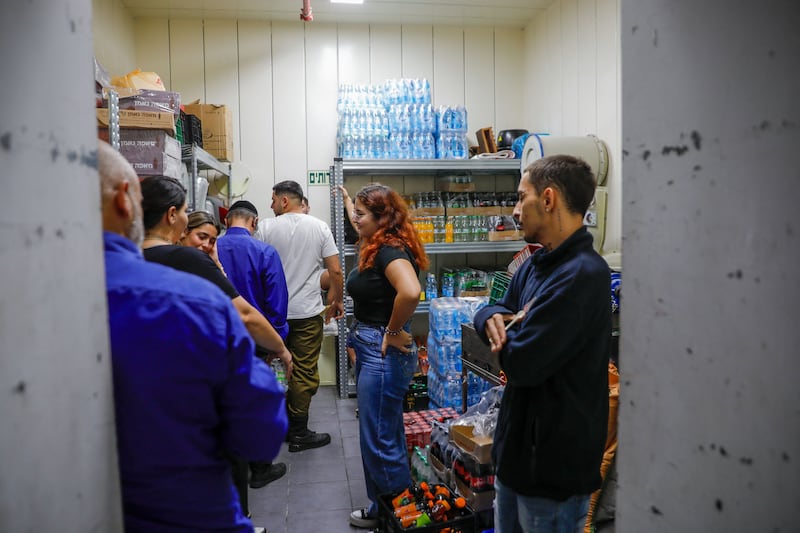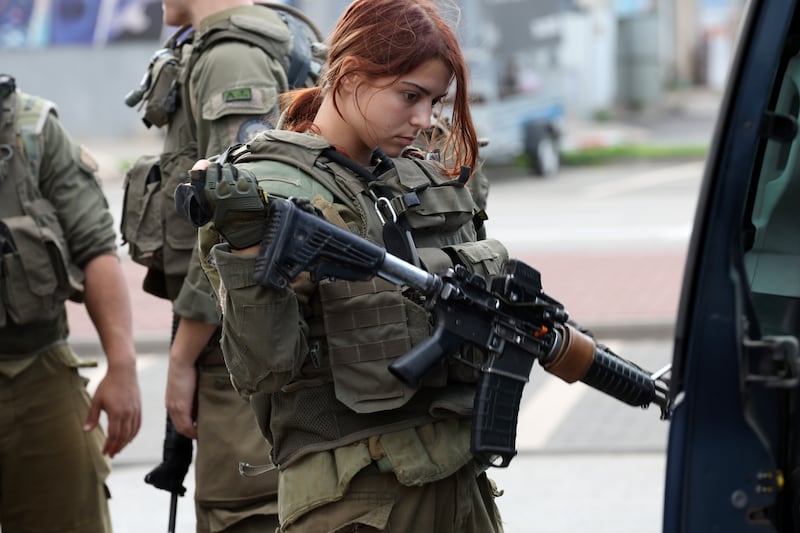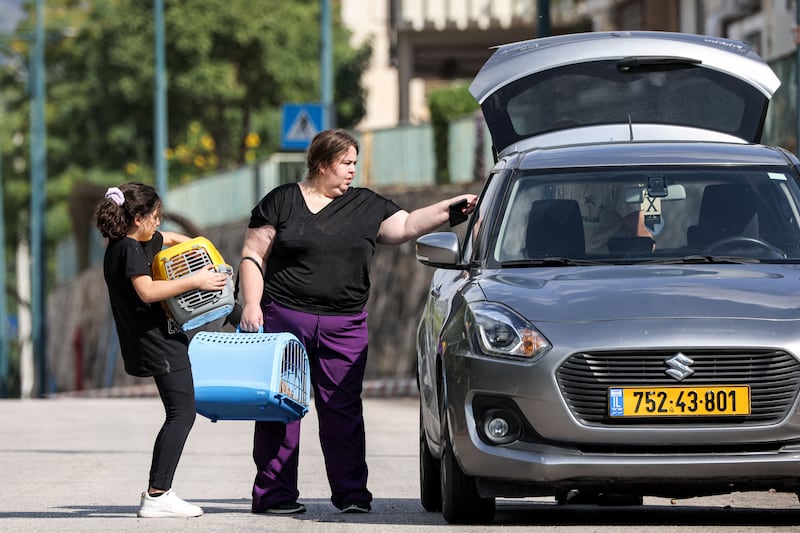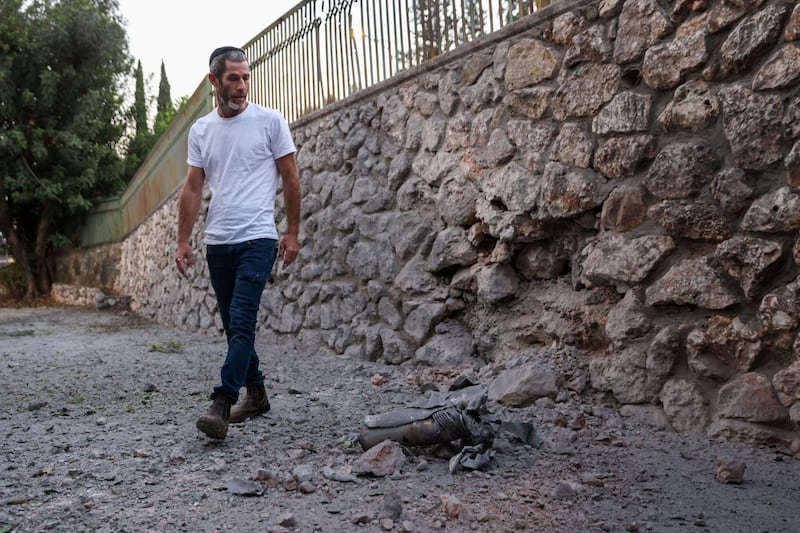People in Bar’am, a kibbutz about 300m from the Lebanese border, are accustomed to living close to a country that hosts the Iran-backed, anti-Israel militant group Hizbullah – close enough, as one resident said, to hear the sounds of mosques and “wave to people” on the other side.
The community in the Galilee Heights, which is home to fruit orchards and the ruins of an ancient Jewish synagogue, was among the border villages that came under missile fire during Israel’s war with Lebanon in 2006. The two countries still have no ties.
When Hamas gunmen raided southern Israel and killed more than 1,400 people in unprecedented cross-border raids on October 7th, Bar’am’s local council convened and asked residents to relocate south the following day.
“After we heard what happened in the south we decided we had to evacuate,” said Lea Raivitz, a spokeswoman for the community, most of whose members are now living in a hotel on the shore of Lake Galilee to the south.
On Thursday Hizbullah fired at least 20 rockets into northern Israel, drawing swift retaliation from the Israeli military and threatening to escalate fighting across the border, which had already increased following the Hamas attacks on Israel on October 7th.
Hizbullah said at least 13 of its fighters have died since then, as have at least four civilians and four Palestinian militants in Lebanon, according to media reports and the Red Cross. At least six people have been killed across the border in Israel, including a civilian struck on Sunday by an anti-tank missile, according to the Israeli military and media reports.

Kibbutz Bar’am’s fears, Raivitz said, are not of missiles or rockets, but of a cross-border attack like the ones from Gaza.
“Usually the threat we face is missiles from Hizbullah, but this time [the] threat could come from the other side: terrorists coming into our houses, slaughtering babies and old people,” said Raivitz, who asked not to share the name of the hotel where the community is staying for fear of alerting militants who might harm its members.
Nearly 400 people, or most of the village, have become evacuees. “It was very important for us to keep the community together as much as we could,” she said.
The mass displacement of tens of thousands of people from Israel’s north and from the southern “Gaza envelope” that was attacked on October 7th has highlighted a fundamental security threat in a war that has laid bare the Jewish state’s weaknesses on military planning and intelligence.
An emerging question for Israel, as it seeks to dislodge Hamas from Gaza in an expected ground offensive, will be whether the war’s outcome will make Israelis feel safe enough to live in its border areas again.

The Israeli government has not released official figures on the numbers displaced since October 7th, but hotels on the Sea of Galilee and Dead Sea, emptied of tourists since the war, are now heaving with many thousands of evacuees, including children and the elderly.
Israel’s military on October 16th ordered the evacuation of 28 communities along its northern border. Residents of the north, however, said many had left the week before the order came.
Naan Eli, a landscape architect from Bar’am, evacuated to Tiberias with his wife and three children on October 8th. Asked when he expected to go back, Eli said: “I have a feeling this is going to last for a while.”
Hizbullah is one of the Middle East’s best-trained and equipped militant groups. Hassan Nasrallah, its leader, boasts that the group’s missiles can reach anywhere inside Israel, while its tens of thousands of fighters stand ready for combat, hardened by years of fighting in Syria’s war.
The US sent a second naval carrier group to the eastern Mediterranean this week, in what Israeli and US officials described as a warning to Hizbullah or its patron Iran not to take advantage of the war to open a second front in the north.
Hizbullah has given no indication that it might stage cross-border raids of the type carried out by Hamas. However, the militant group said on Monday that it had begun destroying surveillance cameras on several Israeli army posts along the border. It released a video showing snipers destroying them at five points, including one outside the Israeli town of Metula.
Lebanese residents of border villages said Hizbullah had repeatedly tampered with the cameras near Metula this summer, as part of its increasingly brazen tactics.
Experts said this could be an attempt to prevent the Israeli army from monitoring movements on the border. It could also just be propaganda, intended to rattle Israelis. Hamas disabled or destroyed cameras during its attacks on southern Israel on October 7th.

Experts and senior diplomats in the region say Iran and Hizbullah have not decided how to respond if Israel mounts a ground offensive. The artillery exchanges have been mostly limited and confined to border areas, in what analysts say is an attempt to contain hostilities.
“So far, the two sides are staying within the rules of engagement,” said David Wood, Lebanon analyst at Crisis Group, adding that these rules were evolving.
“But it’s very clear that the frequency and intensity of the military operations are increasing: the more operations are carried out against the other side, the more likely it is that one is going to go too far.”
A person familiar with Hizbullah’s thinking said: “If they hit us hard in Lebanon, we will have to respond to fire with fire.” They did not specify what a “hard hit” might look like, leaving open the possibility of miscalculation.
The person, who asked not to be named, said Hizbullah had faced “huge diplomatic pressure” to de-escalate.
Hizbullah legislator Hassan Fadlallah said last Sunday that the group was ready for all possibilities, and that its next step was “tied to what is going on in Gaza”.
An Israel military spokesman, asked about the cross-border exchanges of fire, said its forces had “significantly responded to those attacks, and remain ready for any possible development”.

Military roadblocks had been set up over the past week along the route leading to the border town of Metula, with vehicles prevented from entering what is now a closed military zone. Tanks were parked, ready to deploy, and military vehicles carried armed soldiers along the road. Around one roadside curve, a patrol of Israeli soldiers waited, draped in branches, apparently as camouflage.
Streets had emptied out in Kiryat Shmona, one of the region’s largest towns, which sits within reach of short-range missiles and was hit hard during the war in 2006.
A humming buzz could be heard from a drone flying overhead. A woman outside the town’s municipal building was walking her dog, which barked nervously.
“I am not afraid of rockets,” Limor Vardi said. “I am only afraid of infiltrations by Hizbullah.” Vardi, who grew up in the Gaza border area, said she was staying in town because “I have no other place to go”.
On Friday Israel’s military announced it would evacuate Kiryat Shmona’s residents to state-subsidised guesthouses. Speaking before the move, Raivitz, the Bar’am spokeswoman, said the community, whose founders include Holocaust survivors, was determined to go back sooner or later. “We have to go back to the border. The kibbutzim are the ones holding the state.” – Copyright The Financial Times Limited 2023










